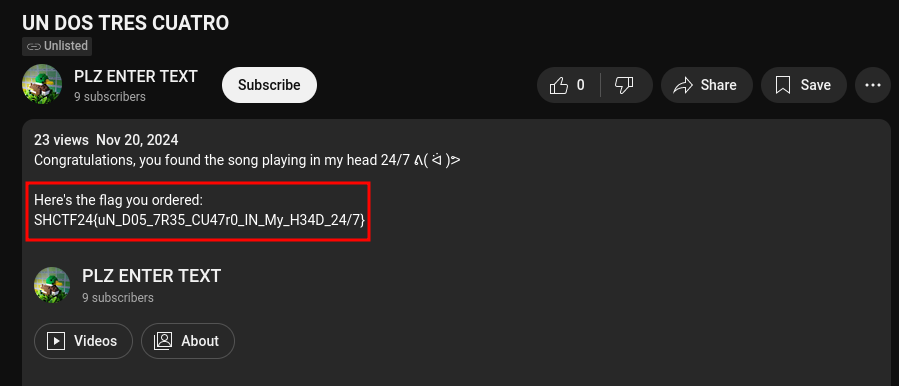Even though the difficulty of this challenge was considered easy, I initially found myself focusing on the wrong steps and conclusions. This led to unnecessary delays and frustration while decoding the wrong data. However, I learned something from this challenge. In this writeup, I will highlight my mistakes and explain the correct approach, so I can avoid repeating the same mistakes in the future.
The challenge presented us with a PCAP file and the following description:
“https://youtube.com/clip/UgkxrLa5UkwGkGiDT3IZoZUS6jDORSAjrCiQ?si=JKvLpTN-mHsA4snO FR But seriously, something is in my head, can you find it?”
The challenge focused on two key aspects: analyzing TCP SYN packets and conducting an IPv4 header analysis. However, I initially took the wrong approach by concentrating on the TCP header and its options field instead of the IPv4 header.
TCP SYN Packet Analysis
Opening the provided PCAP file in Wireshark revealed traffic consisting of various network protocols.


One of the first steps I took was eliminating irrelevant protocols, which is MDNS, because they were just pointless queries within the local network.

This allowed me to focus solely on TCP traffic.

First Mistake: Misinterpreting the Traffic
At first, I misinterpreted the challenge as being related to a DDoS attack. Observing multiple TCP SYN packets sent to the same port (port 9999) repeatedly led me to assume it was a TCP SYN Flood attack. Based on this assumption, I concluded that the machine at IP 10.10.1.13 was acting as a bot in a botnet, while 10.10.1.9 appeared to be a server with some DDoS protection, given its consistent replies with RST-ACK packets.
Here is the TCP Flow Graph exported from the PCAP file:

From the flow graph, we can see a series of TCP ACK packets exchanged between 10.10.1.11 and 10.10.1.13. Subsequently, a pattern emerges with repeated TCP SYN packets sent from 10.10.1.13 to 10.10.1.9. The consistent RST-ACK responses from 10.10.1.9 misled me into thinking this was a DDoS attack.
IPv4 Header Analysis
The true reason for the repeated TCP SYN packets was not a DDoS attack but rather a form of network equivalent steganography, where data was hidden sequentially within the IPv4 header’s Identification field. The challenge description—“something is in my head”—hinted at the need to analyze packet headers closely.
Second Mistake: Ignoring the IPv4 Header
I initially ignored the TCP SYN packets, dismissing them as part of the supposed DDoS attack. Instead, I focused on the TCP packets containing the TCP Options field, based on an article I had read: How Can I Hide Data in the TCP Header. This led me down the wrong path.
Upon revisiting the challenge, I observed that each TCP SYN packet contained a unique Identification value in the IPv4 header. To isolate the TCP SYN packets in Wireshark, I used the filter:
tcp.flags.syn == 1

Extracting the Identification Values
To extract the Identification values, I used the following tshark command:
tshark -r IN_MY_HEADDD.pcapng -Y "tcp.flags.syn == 1" -T fields -e ip.id
This command produced a list of hexadecimal values corresponding to the Identification field of each TCP SYN packet:

I then cleaned up and rearranged these hex values using Sublime Text:

Decoding the Data
The cleaned hex values were then decoded using CyberChef :

The final result was a YouTube link. I found the flag in the description of the video.

The Wrong Steps
After reading an article about the TCP Options field, I used the tcp.options filter in Wireshark to display only TCP packets that contained the TCP Options field. There were five such packets, and each of them had options with a kind labeled as Timestamps.

I extracted the Timestamps values using the following tshark command:
tshark -r IN_MY_HEADDD.pcapng -Y "tcp.options.timestamp" -T fields -e tcp.options.timestamp.tsval

This was the data I spent 12 hours trying to decode, believing it held the solution to the challenge.
The Thing in My Head
In the TCP header, there is an Options field that can hold up to 40 bytes, which could theoretically be used to hide data. At the time, I theorized that a Command-and-Control (C2) payload might be embedded within the TCP header and sent by 10.10.1.11, which I suspected to be an attacker controlling the botnet. While I cannot confirm whether embedding a C2 payload in the TCP Options field is practical or commonly done, this misstep cost me significant time. Is it possible to embed C2 payload in the TCP header, specifically in the TCP Option field?